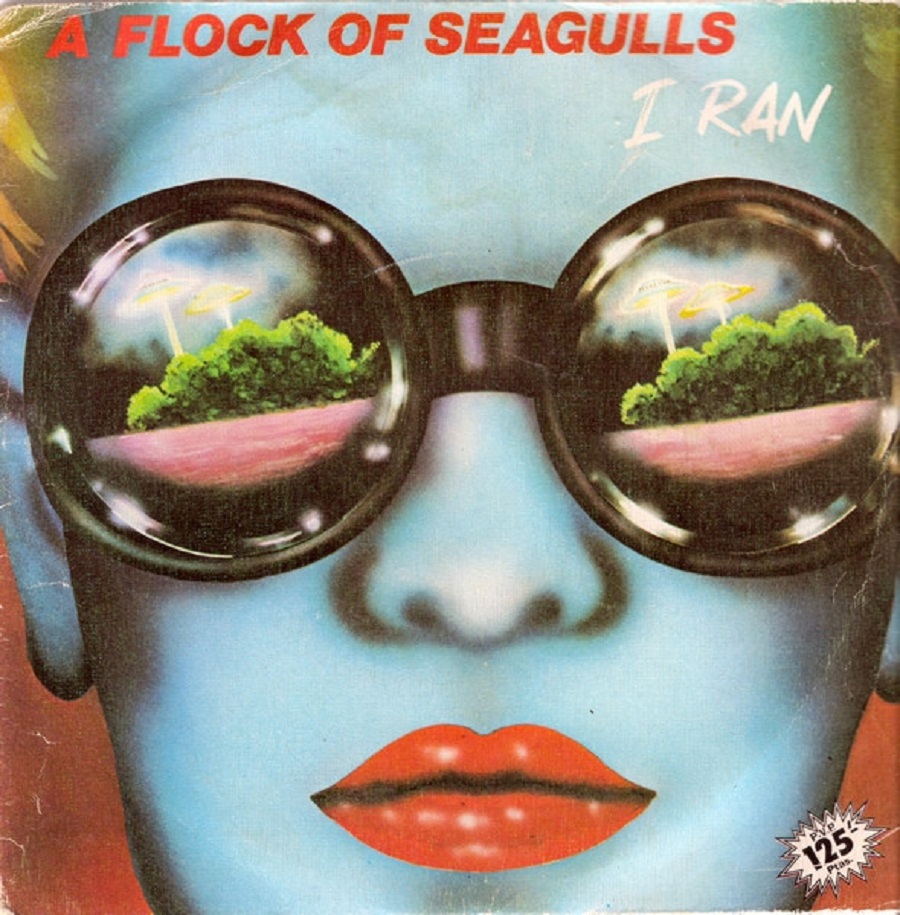Precious Pop Pearls: The Story Behind A Flock of Seagulls – “I Ran (So Far Away)”
In the summer hit year of 1982, a distinctive synthpop track took over radio stations worldwide. With its hypnotic synthesiser riffs, danceable drums, and an unforgettable video, “I Ran (So Far Away)” by A Flock of Seagulls became more than just a hit. It evolved into a cross-generational icon of the Second British Invasion and an integral part of the MTV revolution.
A Liverpool New Wave Band
A Flock of Seagulls formed in 1979 in Liverpool, a city long regarded as the epicentre of British pop music. The band was created by Mike Score, a former hairdresser who had discovered his passion for synthesisers. In their most famous lineup—Mike Score, Ali Score, Frank Maudsley, and Paul Reynolds—they reached the peak of their chart success in the early 1980s.
Late-1970s Liverpool was fertile ground for experimental music. Bands like Echo & the Bunnymen and The Teardrop Explodes paved the way for artists who combined traditional rock with electronic elements. A Flock of Seagulls fit right in but added a more commercial, dance-oriented twist to the new wave sound.
I Ran: Inspired by Liverpool’s Club Scene
Lead vocalist Mike Score cites two key sources of inspiration for “I Ran (So Far Away)”. The band frequented Eric’s Club in Liverpool, where another band had a song titled “I Ran”. This local scene played a crucial role in shaping their sound. Eric’s was known as an experimental venue where new wave, post-punk, and electronic music intersected.
The second inspiration came from Score’s personal experiences and his fascination with science fiction. The song features themes typical of the early 1980s: obsession with technology, alienation, and escapism—traits that would come to define the entire new wave movement.
Chart Success
Upon its 1982 release, “I Ran (So Far Away)” became a major commercial success. The single topped the charts in Australia and reached number seven in New Zealand, while it climbed to number nine in the United States. In the UK, however, it peaked at number 43, underscoring how some new wave acts found greater acceptance abroad.
Their debut album “A Flock of Seagulls” reached number 10 on the U.S. Billboard 200 and number 32 on the UK Albums Chart. In addition to “I Ran (So Far Away)”, the album featured other hits like “Space Age Love Song”, which also cracked the U.S. Top 40.
The Power of the Music Video
The video for “I Ran (So Far Away)” showed the band performing in a room covered with aluminium foil and mirrors. The futuristic, scientific aesthetic perfectly matched early 1980s MTV visuals.
Mike Score’s asymmetric bleached-blond hairstyle became as iconic as the music itself, symbolising the visual identity of new wave and inspiring countless imitators worldwide.
Legacy and Cultural Impact
The band won a Grammy Award in 1983 for their contributions to music. Their success helped pave the way for other British electronic acts and gave the new wave genre legitimacy in mainstream media.
“I Ran (So Far Away)” appeared in numerous films, TV shows, and commercials, keeping the song alive for decades. Its distinctive synth intro is instantly recognisable by music lovers worldwide. Like most hit singles, it also inspired a range of obscure cover versions.
Musical Context of 1982
The song was released in a pivotal year for new wave. 1982 also brought hits like Duran Duran’s “Hungry Like the Wolf”, Depeche Mode’s “Just Can’t Get Enough”, and The Human League’s “Don’t You (Forget About Me)”. Groups like Human League, Tears for Fears, Devo, Depeche Mode, Eurythmics, and Duran Duran embraced synthesisers and funk rhythms.
A Flock of Seagulls stood out for their melodic approach. While bands like Kraftwerk and Gary Numan leaned toward industrial or experimental sounds, they retained a pop structure suited for radio play.
With MTV craving visually striking acts, the Second British Invasion was in full swing—featuring artists from Depeche Mode and Joy Division to Culture Club and Boy George.
Technical Innovation and Sound
“I Ran (So Far Away)” was technically innovative for its time. The production featured the Roland Jupiter-8, a hallmark of early ’80s sound. The fusion of drum machine patterns with live drums created a hybrid style widely imitated in the following years.
Paul Reynolds’ guitar work added a rock edge to the electronic foundation, maintaining accessibility for rock audiences. This blend would come to define early new wave.
A Flock of Seagulls
After their debut, A Flock of Seagulls released “Listen” (1983), followed by “The Story of a Young Heart” (1984). Other hits included “Space Age Love Song” (1982), “Wishing (If I Had a Photograph of You)” (1982), and “The More You Live, the More You Love” (1984).
Though later albums had less commercial impact, the band remained active. Mike Score, the only original member, has kept A Flock of Seagulls going through regular tours and occasional new releases.
Synthpop Classic
Over forty years later, “I Ran (So Far Away)” remains a defining moment in pop history. It marks the peak of the band’s career and a key moment in the rise of electronic pop.
In 2023, a 3CD deluxe edition of the debut album was released to celebrate its 40th anniversary, featuring a remastered version, B-sides, and single edits. It confirms the enduring interest in their music and its significance in the new wave movement.
Ultimately, the story of “I Ran (So Far Away)” is one of a perfect moment—when technology, creativity, and commercial appeal aligned to create something timeless. In an era turning digital, A Flock of Seagulls gave a whole generation the soundtrack to run toward the future.





